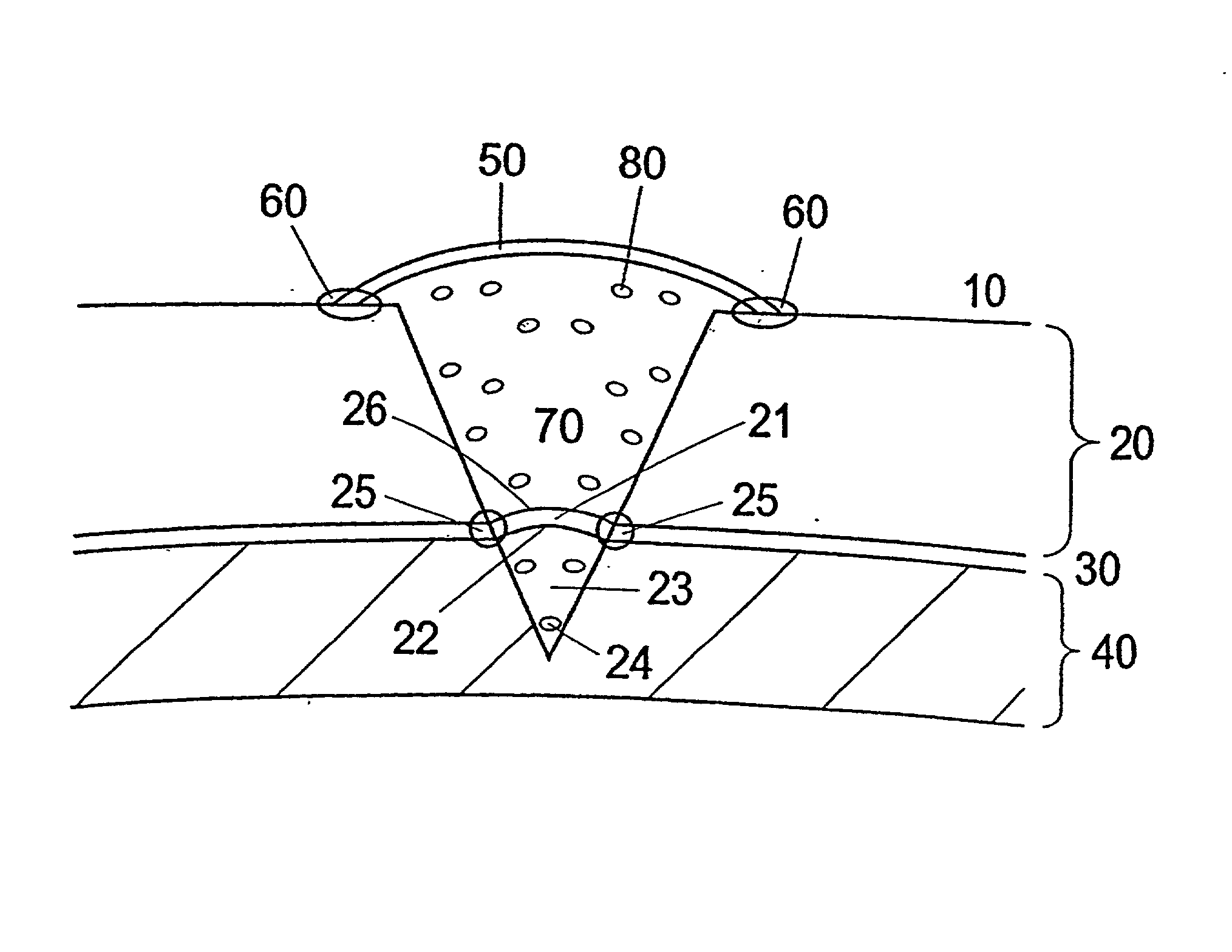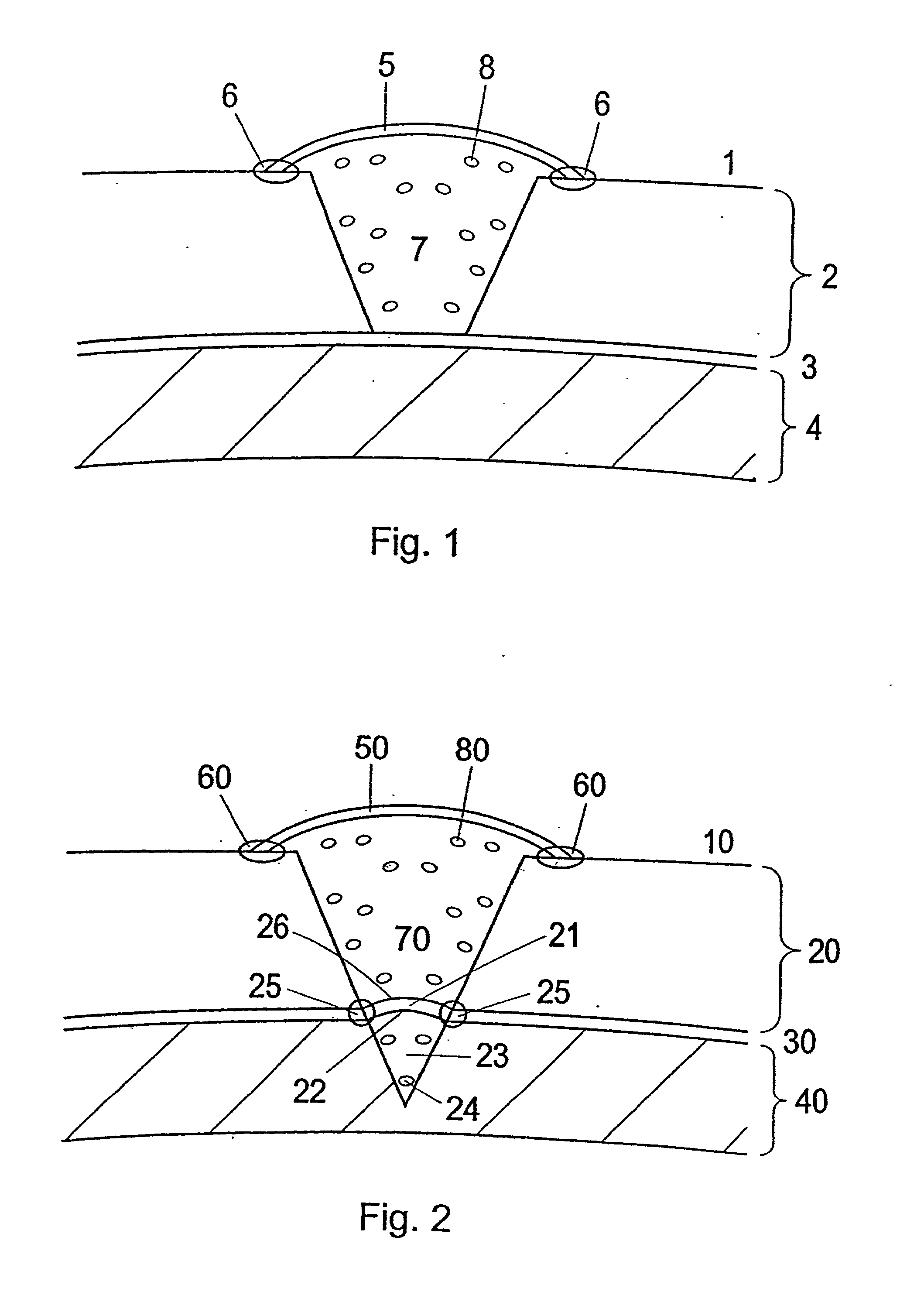Vitro repair of bone and/or cartilage defects
a technology of cartilage and bone, applied in the direction of skeletal/connective tissue cells, prostheses, drug compositions, etc., can solve the problems of no beneficial effect on clinical parameters, no improvement in clinical parameters, gross appearance or microscopic appearance of defects when compared to saline controls, and 35% of horses cannot return to previous use within racing or less possibilities of obtaining previous levels of racing
- Summary
- Abstract
- Description
- Claims
- Application Information
AI Technical Summary
Benefits of technology
Problems solved by technology
Method used
Image
Examples
example 2
[0107] Stimulation Molecule
[0108] Collagen II was purified from large scale culturing of porcine chondrocytes as well as proteoglycans derived from the same porcine cartilage source. Collagen II was obtained from large scale culturing of mammalian chondrocytes (preferably species specific to the recipient of the cells), cultured as explants whereby the adequate amount of Collagen II is present.
example 3
[0109] Protocol for Cultivating Cartilage Explants to a Monolayer Culture:
[0110] A cartilage biopsy is harvested from the patients knee and immediately transferred into aseptic growth medium, supplemented with L-ascorbic acid [50 .mu.g / ml (300 .mu.mol / l)] and gentaricin sulfate [50 .mu.g / ml (10 mmol / l)], Fungizone [2 .mu.g / ml (2.2 .mu.mol / l)] in tissue culture flasks. The cartilage biopsy is then washed carefully with new growth medium and dissected in growth medium into 2-4 mm cartilage pieces (explants). When initially placed in the culture, it takes the cartilage explants approximately several days depending on donor material, to reach a constant metabolic state. Having reached such a steady state (steady state is a balance between synthesis and catabolism), the pre chondroblasts / chondroblasts are now stimulated by growth factors present in the growth medium, which diffundate through the cartilage matrix and bind to various binding proteins present in the matrix as well as bindi...
example 4
[0114] Membrane to be Used for the Treatment and Use of the Membrane
[0115] During open knee surgery, a membrane collagen type I / (III) is used, purchased from Geistlich Biomaterials, Wolhusen, Switzerland or from Baxter (Denmark). The membrane is cut into a size, which is somewhat larger than the cartilage defect, so that the membrane can cover the cartilage defect and extend around 1 / 2 cm beyond the rim of the defect. The membrane is sutured together with the cartilage rim. The border between the membrane and the cartilage is sealed using Tisseel Due Quick (Baxter). The collagen type I membrane is pretreated with a 1-5 ml collagen type II solution (3-10 mg collagen II / ml (Dep. Material Engineering, Drexel University, Philadelphia, Pa.) for 5-15 minutes at room temperature prior to use for implantation.
[0116] a) When performing arthroscopic surgery, the surface of the collagen I( / III) membrane, which is facing the cartilage defect is pretreated with component II a thrombin solution w...
PUM
| Property | Measurement | Unit |
|---|---|---|
| size | aaaaa | aaaaa |
| depth | aaaaa | aaaaa |
| stress | aaaaa | aaaaa |
Abstract
Description
Claims
Application Information
 Login to View More
Login to View More - R&D
- Intellectual Property
- Life Sciences
- Materials
- Tech Scout
- Unparalleled Data Quality
- Higher Quality Content
- 60% Fewer Hallucinations
Browse by: Latest US Patents, China's latest patents, Technical Efficacy Thesaurus, Application Domain, Technology Topic, Popular Technical Reports.
© 2025 PatSnap. All rights reserved.Legal|Privacy policy|Modern Slavery Act Transparency Statement|Sitemap|About US| Contact US: help@patsnap.com


